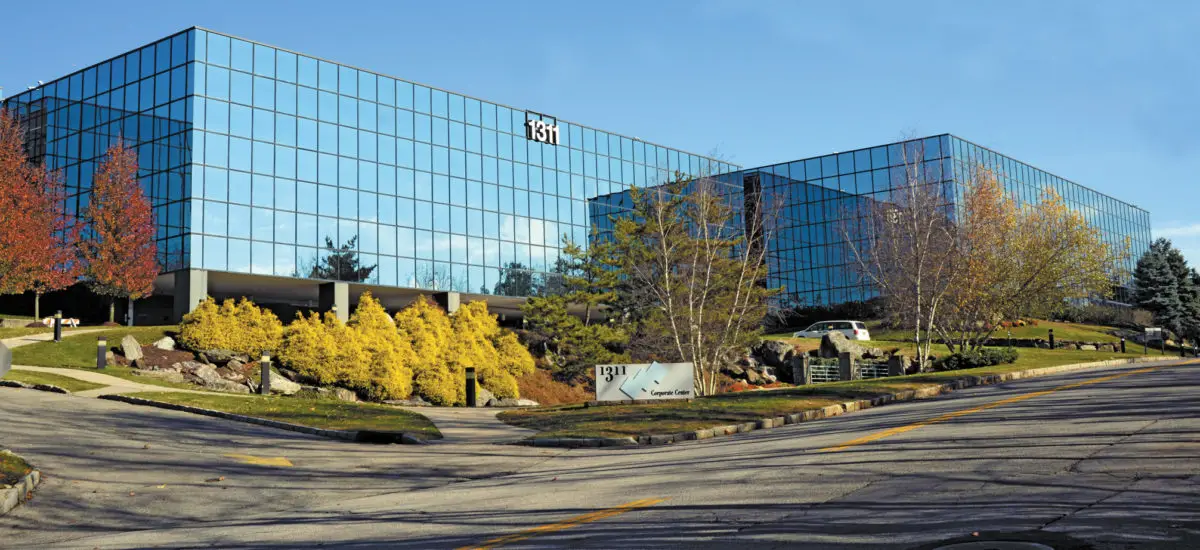Reports show Westchester office market trending up

Two newly released reports on the Westchester office market put activity in a positive light. A report by commercial real estate services firm CBRE covering the first quarter of 2019 indicates that the market was trending in the right direction as space availability fell and absorption was positive. A first-quarter report by Cushman & Wakefield (C&W) included a finding that overall leasing activity in Westchester increased 2.8 percent from the same period in 2018.
The CBRE report said the first quarter saw just under 251,000 square feet leased, an improvement of 22.5 percent from the first quarter of last year. Although the average asking rent was down 4.3 percent year over year to $28.15 per square foot, CBRE said the dip in the average was because more expensive space had previously been leased or was removed from the market for some other reason.
Leasing activity was down from the fourth quarter of 2018 and 12.6 percent under the five-year average.
C&W”™s report said the overall vacancy rate in Westchester stood at 23.9 percent at the end of the first quarter. It said the statistical inventory of vacant space stood at 1,100,000 square feet.
CBRE identified the top leasing transaction for the quarter as the renewal by UnitedHealth Group for 63,575 square feet at 1311 Mamaroneck Ave. in White Plains. In second place was the new lease for 25,581 square feet at 1 International Drive in Rye Brook for POP Displays. That was followed by Wells Fargo”™s leasing of 21,294 square feet at 2500 Westchester Ave. in Purchase. Goldberg Segalla LLP”™s lease of 17,812 square feet at 50 Main St. in White Plains was in the fourth spot. The lease renewal by NYSUT for 15,800 square feet at 520 White Plains Road in Tarrytown was the fifth top lease transaction in the county as reported by CBRE.
The CBRE report looked at conditions in the county”™s geographic submarkets, including the northern, southern, eastern and western. The eastern sector showed a 12.4 percent vacancy rate. In the west, it stood at 22.9 percent. Northern Westchester had a vacancy rate of 19.7 percent, while the low was in the southern sector at 7.5 percent. The central business district submarket showed a 13.8 percent office vacancy rate.
Blocks of space greater than 100,000 square feet remained scarce, CBRE”™s report said. It noted that there are only six such spaces available and they are not in locations where demand is strongest. Throughout Westchester, the percentage of total office space that was available stood at 17.3 percent, the lowest amount in more than five years. In the central business district of White Plains, it was 16.3 percent. CBRE noted that central business districts benefit from corporate migration toward transit-oriented development and that some tenants have been able to shrink their footprints even though their employee counts have remained the same or even increased.
The C&W report said that as space in downtown White Plains continues to be absorbed, some slowdown can be expected. It said some decrease in tenant demand could be a result of the expected continued upward trajectory in rents. It said Class A space in downtown White Plains recorded a year-over-year increase of $0.86 per square foot to $37.38, making downtown White Plains the most expensive submarket in the county.
The CBRE report stated that the overall economy of Westchester is strong and it pointed to an unemployment rate of 3.8 percent as of February, matching the nationwide rate and below the New York state rate of 4.4 percent.
William V. Cuddy Jr., executive vice president of CBRE, told the Business Journal that CBRE tracks the amount of space available for sublease, which was only 8.3 percent of the total available space as of the end of the first quarter. “Frankly, that”™s a low number, but it demonstrates that the corporate enterprises that are here have a balanced use of their space. There isn”™t excess inventory that”™s in the sublease market,” Cuddy said. He suggested the fact that sublease space is only 8.3 percent of what”™s available means that there”™s a healthy economic condition in the region.
While Cuddy sees continued strength in demand around transit hubs, he did note one anomaly. “Downtown White Plains has always and continues to be the hub for the legal profession, and that had always been driven by access to the local, county, state and federal courthouses. With so much of the legal practice now executing electronically, that proximity to the courthouse isn”™t needed as much as it once was, and we are seeing more and more law firms relocating from downtown White Plains to the suburban markets.”
Nevertheless, Cuddy sees transit-oriented demand as solid. “We not only see transit-oriented development demand continuing, we think it will increase. Access to quality labor is so critically important for the viabilities of these corporate enterprises. These transportation nodes allow access to a broader demographic pool of employees and that”™s a very healthy trend.”